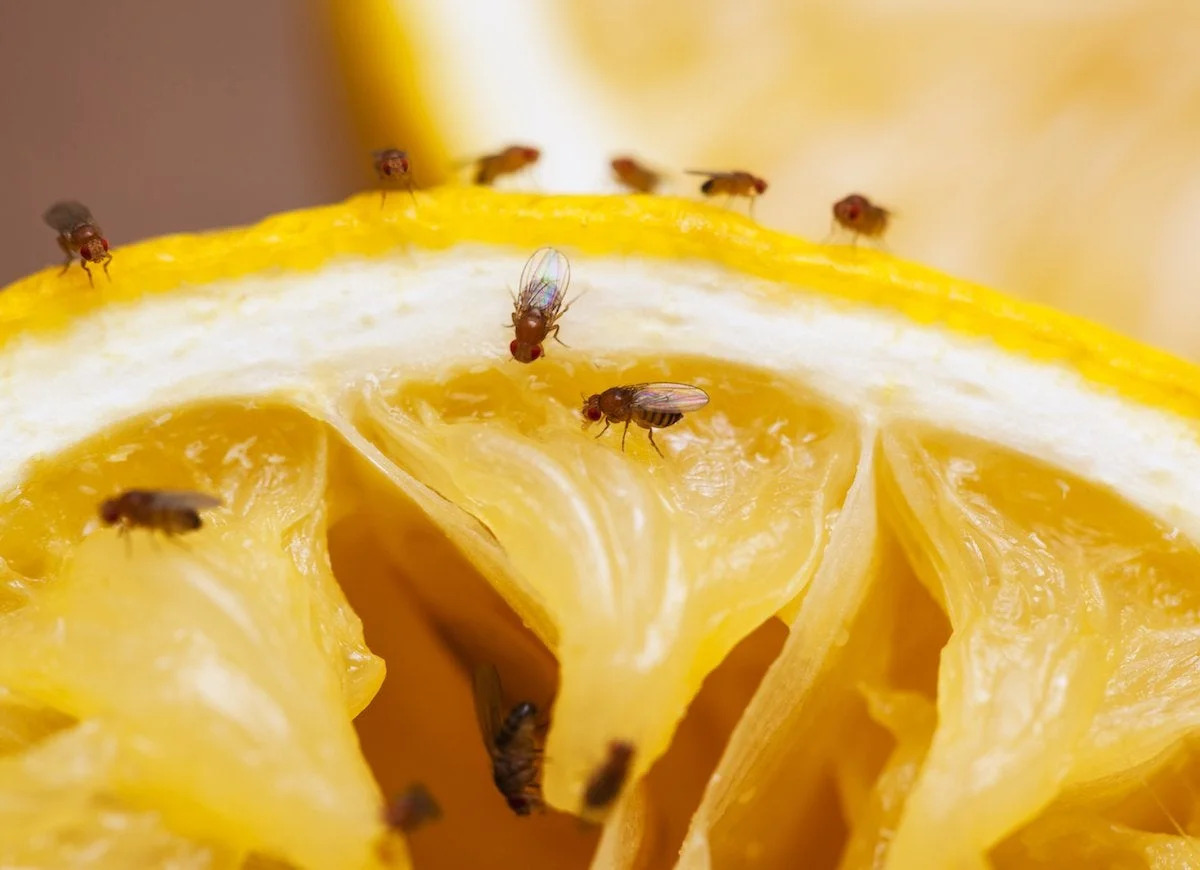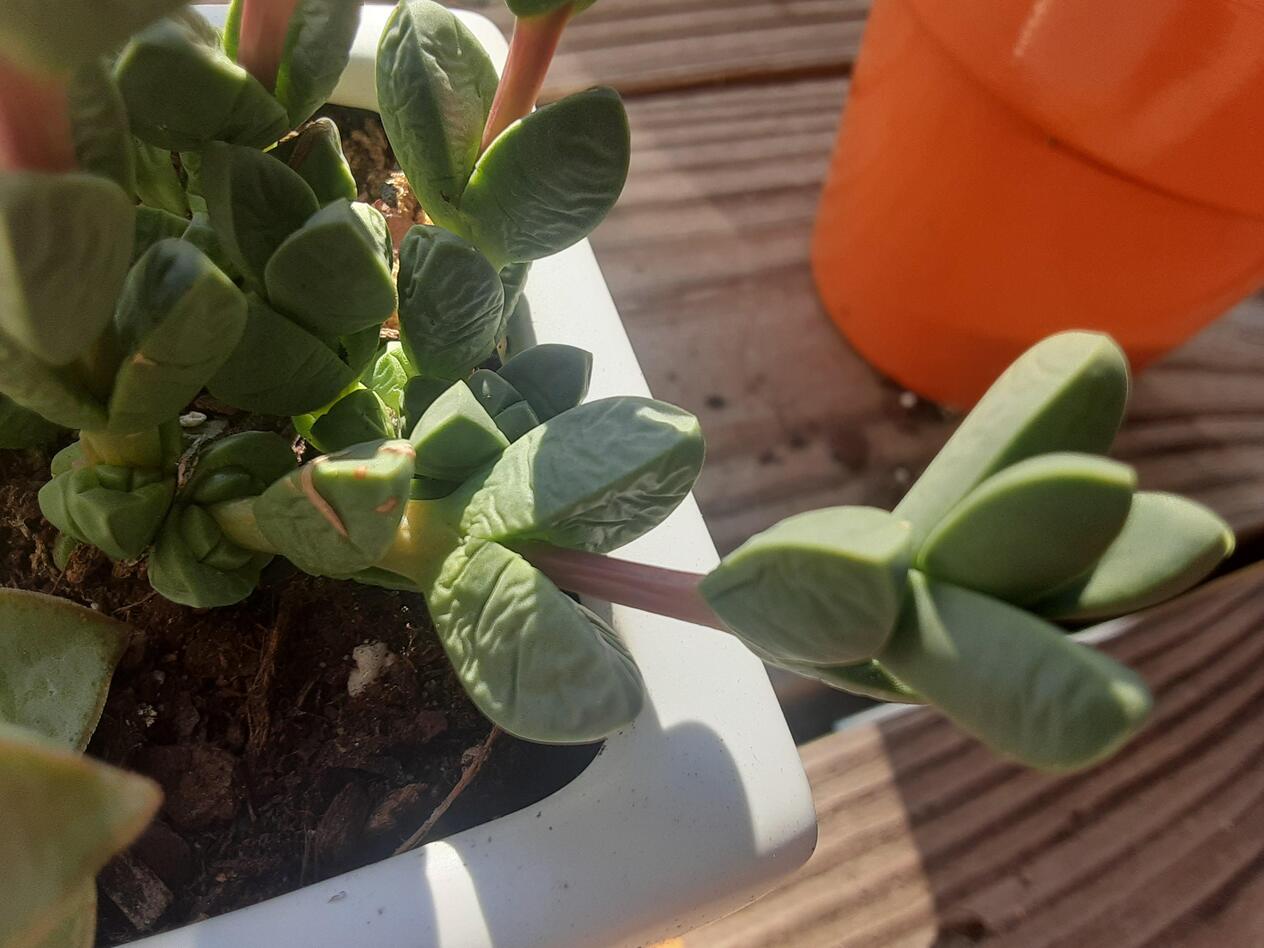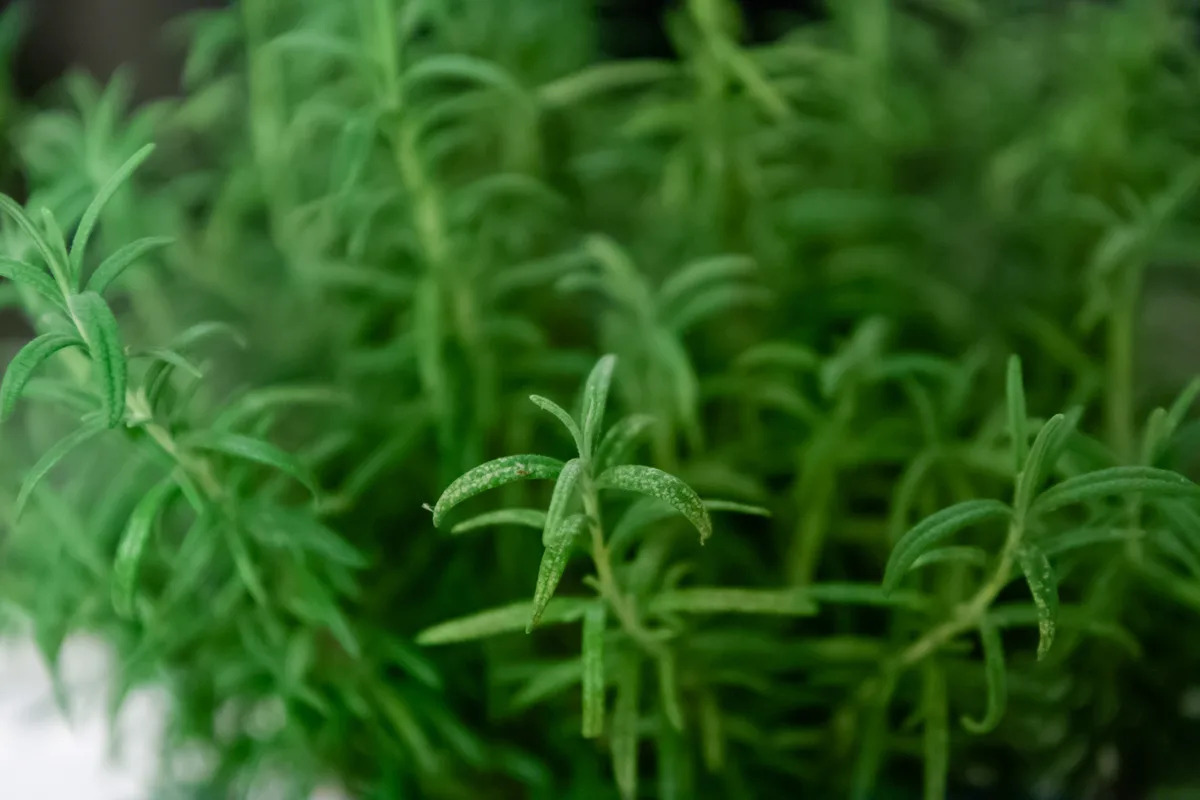Home>Gardening News and Trends>Latest News>Why Are There So Many Insects In My House


Latest News
Why Are There So Many Insects In My House
Modified: January 22, 2024
Looking for the latest news on why there are so many insects in your house? Discover the reasons behind this common problem and find effective solutions to keep them at bay.
(Many of the links in this article redirect to a specific reviewed product. Your purchase of these products through affiliate links helps to generate commission for Chicagolandgardening.com, at no extra cost. Learn more)
Table of Contents
Introduction
Welcome to the world of insects! They seem to be everywhere, including in our very own homes. It’s not uncommon to spot a tiny critter scurrying across the floor or flying around the kitchen. But have you ever wondered why there are so many insects in your house? In this article, we will delve into the factors that contribute to the influx of insects in residential areas.
First and foremost, it’s important to understand that insects are an essential part of our ecosystem. They play vital roles in pollination, nutrient recycling, and serving as a food source for other animals. However, when they find their way into our homes, they can quickly become a nuisance. From pesky ants raiding our pantries to spiders lurking in the corners, the presence of insects in our living spaces can be unpleasant and even problematic.
There are several common types of insects that you may come across in your house. These include ants, cockroaches, flies, mosquitoes, spiders, and silverfish, among others. Each of these insects has its own distinct behavior and characteristics that determine how they infiltrate our homes and thrive in our environments.
So why do insects choose to invade our homes? There are several reasons for this, including the search for food, shelter, and favorable breeding conditions. Understanding these factors can help us gain insight into why insects become frequent house guests.
Common Types of Insects Found in Houses
When it comes to insects in houses, there are a few common culprits that tend to make their presence known. Let’s take a look at some of the most frequently encountered insects in residential areas:
- Ants: These tiny creatures are social insects that are attracted to food sources. They often form long trails and can be found marching through kitchens and pantries in search of crumbs and spills.
- Cockroaches: These resilient creatures are known for their ability to survive in various environments. They are attracted to warmth, moisture, and food, and can often be found in areas such as bathrooms, kitchens, and basements.
- Flies: Flies are notorious for buzzing around and annoyingly landing on our food. They are attracted to organic matter and can be found in kitchens and garbage areas.
- Mosquitoes: These blood-sucking insects not only leave us with itchy bites but also pose health risks by transmitting diseases. They breed in stagnant water and are commonly found in outdoor areas such as gardens and near bodies of water.
- Spiders: While spiders are technically not insects, they are often found in homes. They tend to take up residence in quiet corners and may even help control other insect populations by catching them in their webs.
- Silverfish: These small, silver-colored insects prefer damp and dark environments. They can commonly be found in bathrooms, basements, and attics, and are known for their destructive feeding habits.
These are just a few examples of the insects that can find their way into our homes. The type and prevalence of these insects can vary depending on your geographic location and environmental factors.
Now that we have identified some of the common insects found in houses, let’s explore the reasons why they choose to invade our living spaces.
Reasons for Insects in Houses
The invasion of insects in houses can be attributed to a variety of factors. Understanding these reasons can help us take proactive measures to prevent and control their presence. Here are some of the key reasons why insects find their way into our homes:
- Food: One of the primary reasons insects invade houses is the availability of food sources. From crumbs on the kitchen countertop to open food containers, these tiny pests have a keen sense of smell and can detect even the smallest traces of food. Once they discover a reliable food source, they will not hesitate to take up residence.
- Shelter: Insects are constantly searching for safe and sheltered environments. Our homes provide ample hiding spots and protection from harsh weather conditions. Whether it’s cracks in walls, gaps in window screens, or small openings in doors, insects can easily find their way inside and establish their nests or hiding places.
- Water and Moisture: Many insects, such as cockroaches and silverfish, are attracted to moisture-rich areas. Leaky pipes, damp basements, and poorly ventilated bathrooms create the perfect habitat for these pests. They not only seek water for survival but also use it as a breeding ground.
- Heat and Light: Insects are often drawn to heat and light. Open windows, doors, and well-lit areas can act as beacons, attracting various insect species. They perceive the warmth and brightness as a sign of potential food and suitable conditions for survival.
- Proximity to Nature: Houses located near green spaces, gardens, or areas with dense vegetation are more prone to insect invasions. The proximity to natural habitats increases the chances of insects finding their way indoors in search of food and shelter.
It’s important to note that even the cleanest and most well-maintained homes can still attract insects. Their ability to squeeze through tiny cracks and their persistent nature make it challenging to completely seal off our houses from these intruders. However, understanding the reasons behind their presence can help us implement preventive measures to minimize their entry and infestation.
In the next section, we will explore the common entry points that insects use to infiltrate our homes.
Common Entry Points for Insects
As much as we try to keep our homes secure, insects have a knack for finding their way inside. They can exploit even the tiniest openings to gain access. Knowing their common entry points can help us take targeted measures to prevent their entry. Here are some of the most common entry points for insects:
- Doors and Windows: Insects often enter through gaps around doors and windows. Poorly sealed frames, cracks in caulking, or damaged screens can provide easy entry points. It’s important to inspect and seal any openings or repair damaged screens to prevent insects from slipping inside.
- Cracks and Crevices: Cracks in walls, foundation, or floors can provide ideal entry points for insects. Even small gaps can be exploited by ants, spiders, and other tiny pests. Sealing these cracks with caulk or appropriate sealants can help create a barrier against their entry.
- Vents and Ducts: Insects can make their way into homes through HVAC vents, exhaust vents, and ducts. These openings may not be adequately sealed, allowing pests to enter. Regularly inspect and seal these openings to minimize the risk of intrusion.
- Pipes and Plumbing: Leaky pipes, drainpipes, and gaps around plumbing fixtures provide insects with both moisture and entry points. Repairing any leaks and sealing gaps around plumbing will help eliminate potential access for insects.
- Utility Lines and Wiring: Insects can exploit gaps or holes around utility lines, such as electrical, telephone, or cable connections. Ensure that these entry points are properly sealed or filled to prevent insects from entering your home.
- Outdoor Vegetation: Overhanging branches or vegetation in close proximity to the house can act as bridges for insects to gain access. Trim any vegetation that is touching or close to the house to minimize their entry points.
It’s essential to regularly inspect and maintain these potential entry points to keep insects at bay. By taking proactive steps to seal off these areas, you can significantly reduce the risk of unwanted guests infiltrating your home.
Now that we’ve explored the common entry points for insects, let’s uncover the factors that attract them to houses in the first place.
Factors that Attract Insects to Houses
Insects are constantly on the lookout for suitable environments to survive and thrive. When it comes to our homes, certain factors can act as strong attractants for them. Understanding these factors can help us take proactive measures to minimize their attraction. Here are some of the key factors that attract insects to houses:
- Food Availability: The presence of accessible food sources is one of the primary factors that attract insects to houses. Crumbs on the floor, unsealed food containers, and exposed trash are all inviting to hungry pests. Proper food storage, regular cleaning, and securing trash bins can reduce their food attraction.
- Warmth and Moisture: Many insects are drawn to warm and moist areas. Leaky pipes, damp basements, and areas with high humidity are like magnets for these pests. Fixing leaks, improving ventilation, and using dehumidifiers can help mitigate their attraction to these conditions.
- Lighting: Insects, especially flying ones like mosquitoes and flies, are often attracted to light sources. Bright outdoor lights or light penetrating through windows can lure them indoors. Utilizing yellow or LED lights and using window coverings at night can help reduce their attraction.
- Refuge and Shelter: Insects seek out secure and sheltered environments to avoid predators and harsh conditions. Cluttered spaces, piles of organic matter, and areas with dense vegetation provide ideal hiding spots. Regular decluttering, proper storage, and maintaining well-organized outdoor spaces can minimize their refuge opportunities.
- Proximity to Natural Habitats: Houses located near forests, fields, or bodies of water are more likely to attract insects. The proximity to natural habitats increases the chances of insect infiltration. Maintaining a clear and well-maintained perimeter around the house can reduce their attraction.
- Pesticide Use: Ironically, the use of certain pesticides can also attract insects. Insects that are resistant to specific pesticides can be drawn to treated areas as they perceive them as safe spots. Employing eco-friendly alternatives or seeking professional pest control services can help minimize their attraction.
It’s important to note that even if your house is clean, well-maintained, and free of attractants, insects may still find their way in. Nonetheless, by addressing these factors and implementing preventive measures, you can significantly reduce the chances of an insect infestation.
Next, let’s explore the harmful effects that insects in houses can have and why it’s crucial to address the issue.
Harmful Effects of Insects in Houses
Having insects in your house isn’t just a matter of annoyance; it can also have harmful effects on your living environment. Here are some of the potential negative impacts of having insects in houses:
- Health Risks: Certain insects can pose health risks to humans. Mosquitoes, for example, are known carriers of diseases such as dengue fever, malaria, and Zika virus. Cockroaches can trigger allergies and exacerbate asthma symptoms. Flies can contaminate food and spread bacteria. It’s important to minimize their presence to reduce these health risks.
- Structural Damage: Some insects, like termites and carpenter ants, can cause significant damage to the structural integrity of your house. They burrow into wood and weaken its structural strength. If left unchecked, they can cause extensive damage and require costly repairs.
- Contamination: Insects can contaminate food, surfaces, and even the air. They carry bacteria, pathogens, and allergens on their bodies, which can be transferred to the things they touch. This can lead to foodborne illnesses and other health issues, especially if you inadvertently consume contaminated food.
- Psychological Impact: The presence of insects in your house can have a psychological impact, causing stress, anxiety, and a sense of unease. Fear of stings, bites, or the creepy-crawly sensation can make you feel uncomfortable and unsettled in your own home.
- Sleep Disturbances: Some insects, like mosquitoes and bed bugs, are nocturnal and can disrupt your sleep. Their buzzing or biting can lead to sleepless nights, resulting in fatigue and irritability during the day.
- Decreased Property Value: A severe infestation of insects can decrease the value of your property. If your house is known to have pest problems, it can deter potential buyers and make it more challenging to sell in the future.
It’s crucial to address the issue of insects in houses promptly to prevent these harmful effects. By taking proactive measures to control and prevent their presence, you can ensure a healthier and more comfortable living environment for you and your family.
Now, let’s delve into some effective preventive measures that can help you in controlling insects in houses.
Preventive Measures for Controlling Insects in Houses
Controlling insects in houses requires a proactive approach to minimize their entry and establish preventive measures. By implementing the following preventive measures, you can significantly reduce the presence of insects in your home:
- Maintain cleanliness: Regularly clean and vacuum your home to remove food crumbs, spills, and other potential food sources that attract insects. Pay special attention to kitchen areas, dining spaces, and floors.
- Proper food storage: Store food in airtight containers, and keep pantry shelves clean and organized. Ensure that wrappers, bags, and boxes are properly sealed to prevent insects from gaining access to food sources.
- Seal entry points: Inspect your house for cracks, gaps, and openings that may serve as entry points for insects. Seal them with caulk, weatherstrips, or appropriate sealants. Install and maintain properly fitted screens on doors and windows to keep insects out.
- Eliminate standing water: Ensure that there are no stagnant water sources in and around your house, as they serve as breeding grounds for mosquitoes and other insects. Fix any leaks, clear clogged drains, and remove any containers that can collect water.
- Trim vegetation: Trim bushes, trees, and shrubs that are close to your house to minimize potential bridges that insects can use to access your home. Additionally, keep your garden well-maintained to reduce hiding spots for pests.
- Regular maintenance: Conduct regular inspections of your house to identify and fix any potential entry points or structural damage that could attract insects. Repair any damaged screens, seal cracks, and address plumbing issues promptly.
- Limit outdoor lighting: Consider using yellow or LED lights for outdoor lighting, as they are less attractive to insects. Ensure that outdoor lights are not positioned close to entrances, as this can draw insects inside.
- Professional pest control: If you are facing a persistent and severe insect infestation, it is advisable to seek professional pest control services. They can assess the situation, provide targeted treatment, and offer guidance on long-term prevention.
By incorporating these preventive measures into your routine, you can create a more inhospitable environment for insects and reduce their presence in your home. Remember, consistency and persistence are key to effective insect control.
Next, let’s explore some natural remedies that can help in dealing with insects in houses.
Natural Remedies for Dealing with Insects in Houses
If you prefer to use natural methods to control insects in your house, there are several effective remedies available. These natural alternatives can help to deter insects and minimize their presence without the use of harsh chemicals. Here are some natural remedies for dealing with insects in houses:
- Essential Oils: Certain essential oils, such as peppermint, lavender, citrus, and tea tree oil, have insect-repellent properties. Dilute a few drops of your chosen oil with water and spray it in areas where insects are commonly found, such as doorways, windowsills, and entry points. Not only will it keep insects away, but it will also leave a pleasant scent.
- Diatomaceous Earth: Diatomaceous earth is a natural powder made from fossilized remains of marine organisms. It is non-toxic to humans but harmful to insects. Sprinkle diatomaceous earth in areas where insects are present, such as cracks, crevices, and under furniture. It acts by dehydrating insects and disrupting their exoskeletons.
- Vinegar: Vinegar is a versatile natural remedy that can repel insects. Create a mixture of equal parts vinegar and water and use it to wipe down surfaces, floors, and countertops. You can also place small containers filled with vinegar near entry points to deter insects.
- Citrus Peels: The strong scent of citrus deters many insects. Place citrus peels, such as orange or lemon, near windows, doorways, and other areas where insects enter. You can also rub the peel on surfaces or use citrus-scented cleaners to repel insects.
- Cleanliness and Decluttering: Maintaining a clean and clutter-free home is an effective natural remedy for keeping insects at bay. Regularly vacuum, sweep, and mop floors to eliminate potential food sources and hiding spots for pests. Decluttering also removes potential nesting areas.
- Natural Insect Traps: There are various natural insect traps that you can create at home. For example, a mixture of sugar and borax can attract and eliminate ants. Sticky traps made with adhesive strips can catch crawling insects. Research specific homemade traps for the particular insect issue you are dealing with.
- Herbs and Plants: Some herbs and plants have insect-repellent properties. Planting herbs like basil, mint, rosemary, and lavender near entrances or in your garden can help repel insects. You can also create sachets of dried herbs and place them in vulnerable areas.
These natural remedies can be effective in controlling insects in houses. However, it’s important to remember that prevention is key. Combining these remedies with proper sanitation practices and maintaining a clean and well-maintained home will yield the best results.
As we conclude, it’s important to be diligent in implementing preventive measures and actively managing the presence of insects in your house. By doing so, you can create a comfortable and pest-free environment for you and your family to enjoy.
Conclusion
Insects in houses are a common issue that many homeowners face. The presence of these unwanted guests can be bothersome and potentially harmful. Understanding why insects invade our homes and the factors that attract them is crucial in effectively controlling and preventing infestations.
From ants and cockroaches to flies and mosquitoes, there are various common types of insects that can be found inside houses. They seek out food, warmth, shelter, and moisture, which are readily available in residential environments. Identifying their common entry points, such as doors, windows, cracks, and vents, allows us to seal these areas off and minimize their access.
Factors that attract insects to houses include the availability of food, warmth, moisture, lighting, and proximity to natural habitats. By addressing these factors, such as proper food storage, maintaining cleanliness, reducing excess moisture, and limiting outdoor lighting, we can decrease their attraction to our homes.
Insects in houses can have harmful effects, including health risks, structural damage, contamination, psychological impact, sleep disturbances, and decreased property value. It is essential to take preventive measures to control their presence, such as maintaining cleanliness, sealing entry points, eliminating standing water, trimming vegetation, and conducting regular maintenance checks.
For those who prefer natural methods, various remedies can help in dealing with insects. Essential oils, diatomaceous earth, vinegar, citrus peels, natural insect traps, and certain herbs and plants can be effective in deterring insects without the use of harsh chemicals.
In conclusion, by understanding the reasons behind the influx of insects in houses and implementing preventive measures, we can create a pest-free and comfortable environment. Whether through sealing entry points, addressing attractants, or utilizing natural remedies, taking proactive steps is key to controlling the presence of insects in our homes. With consistent effort and diligence, we can minimize their intrusion and create a more harmonious living space for ourselves and our loved ones.






